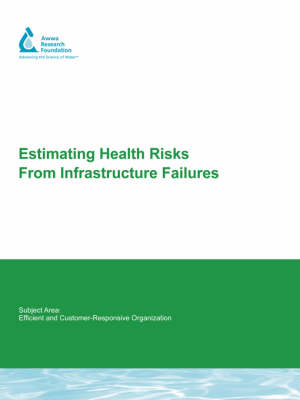Water Research Foundation Report
2 total works
Building a Business Case for Geospatial Information Technology
by Susan Ancel, Dave DiSera, Nancy Lerner, and Mary Ann Stewart
Published 31 August 2007
The objectives of this study were to (1) review current literature related to Geospatial Information Technology (GIT); (2) perform a web-distributed survey of water utilities, other utilities, and government agencies regarding geospatial benefits; (3) further develop return on investment methodology; (4) develop a set of spreadsheet templates, examples, and directions for utilities to analyze; and (5) visit water and other utility sites to perform individual case studies and perform an investment analysis on these projects.
GIT is defined as a collection of hardware, software, data, and procedures functioning together to capture, manage, analyze, maintain, and display information that has a geospatial reference to the real world. GIT is a complicated investment. Initial costs can be high and tangible benefits can take several years to materialize. Organizations must identify these benefits and then predict their financial impact. The implementation of a GIT program can assist an organization's ability to reduce operational costs and data redundancy, improve analysis process, and increase the ability to access and integrate information. However, the technical intricacies of GIT can be overwhelming.
GIT is defined as a collection of hardware, software, data, and procedures functioning together to capture, manage, analyze, maintain, and display information that has a geospatial reference to the real world. GIT is a complicated investment. Initial costs can be high and tangible benefits can take several years to materialize. Organizations must identify these benefits and then predict their financial impact. The implementation of a GIT program can assist an organization's ability to reduce operational costs and data redundancy, improve analysis process, and increase the ability to access and integrate information. However, the technical intricacies of GIT can be overwhelming.
Estimating Health Risks from Infrastructure Failures
by Karen M. E. Emde, Daniel W. Smith, James A. Talbot, Les Gammie, Susan Ancel, Nelson Fok, and Janet Mainiero
Published 31 May 2007
Health risks from infrastructure failures are not well understood, despite the potential widespread introduction of chemical, microbial, and physical contaminants, as well as service disruptions. Public health effects due to distribution infrastructure failures are the concern and responsibility of the local water utility, the health department, community medical care providers, and in special circumstances, emergency first response agencies. While the water utility is responsible for safe water, including the operation and maintenance of distribution infrastructure, other agencies including public health regulators, medical practitioners, and first responders (e.g., police, fire, others) also play a pivotal and active role when dealing with the impacts of infrastructure failures on the community. All agencies involved with some aspect of public health protection from infrastructure failures acknowledged that the true extent of health effects, while not yet well known or characterized, required a collaborative, interagency approach.
The study identified methods to develop future collaborative efforts, which included improved understanding of the relationships and outcomes between infrastructure failure events and measured health outcomes, as well as the need to develop improved tools for the detection and monitoring of these events and community effects. This includes the need to develop/refine collaboration for interagency surveillance, response, and mitigation efforts for infrastructure failures. The study identified ways to improve interagency communication as well as potential opportunities for cross-training to improve understanding between stakeholders and to develop better collaborative relationships and programs.
The study identified methods to develop future collaborative efforts, which included improved understanding of the relationships and outcomes between infrastructure failure events and measured health outcomes, as well as the need to develop improved tools for the detection and monitoring of these events and community effects. This includes the need to develop/refine collaboration for interagency surveillance, response, and mitigation efforts for infrastructure failures. The study identified ways to improve interagency communication as well as potential opportunities for cross-training to improve understanding between stakeholders and to develop better collaborative relationships and programs.

